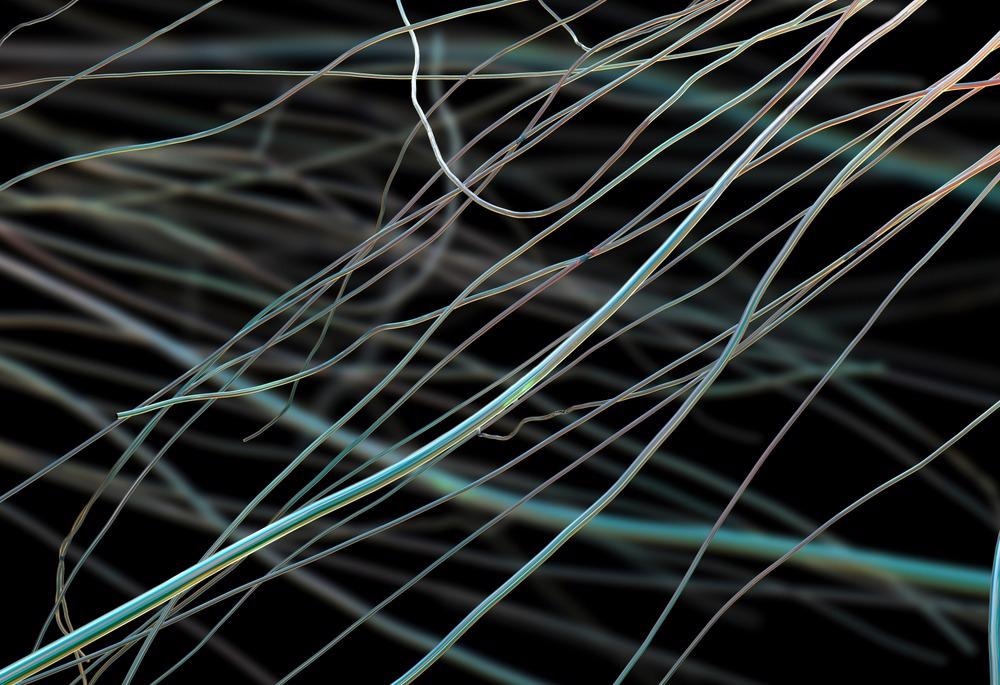Nanofibers with self-healing properties are emerging as revolutionary materials for further advancements in nanotechnology’s forefront. This article discusses self-healing nanofibers, their background, applications in various industrial sectors, and recent relevant studies.

Image Credit: Kateryna Kon/Shutterstock.com
Background
Material scientists have worked to improve several attributes of materials over the decades. Consistent research and development have produced materials with enhanced performance. However, materials still degrade over time and experience operational fatigue, leading to nanocracks and ultimately failure.
Most composites are vulnerable to microcracks that are very hard to detect or repair, causing decreased reliability and shorter lifespans of these materials. The solution for such an issue is located in self-healing nanofibers.
What are Self-Healing Nanofibers?
Self-healing is a relatively new perspective for advanced and responsive materials. Nanomaterials that can heal themselves, such as mimicking the healing of biological organisms, are known as self-healing nanomaterials.
The nanofibers in such materials automatically instantly repair the damaged area. These materials are used in diverse applications across scientific fields, including engineering, military, energy harvesting, dentistry, orthopedics, communication, construction, aerospace, and automobile industries.
How are Self-Healing Nanofibers Fabricated?
Electrospinning is a unique process used to manufacture nanofibers using an electrostatic field. It is based on the principle of electrohydrodynamics.
In this process, nanofibers are produced by the acceleration of liquid jets having self-healing properties that are subject to coupled effects of an electric field on viscous liquids like melts, dispersions and solutions. These liquid jets go through elongation, evaporation and solidification processes, after which nanofibers can be collected.
Compared to other approaches to processing nanofibers, this technology is not only user-friendly but also relatively economical, thanks to its adaptability in fabricating continuous nanofibers from a wide range of polymers. There are several advantages associated with manufacturing nanofibers using this technique, including mass production competence, ease of combining materials, fiber functionalization, and fine-tunable fiber properties.
Electrospinning methods have seen significant development over the last two decades, allowing for more morphological control over the deposited nanofibers and improving fiber production and variety. During the last two decades, several different electrospinning derivative models have been developed and patented, including electroblowing, multijet electrospinning, near-field electrospinning, melt electrospinning, bubble electrospinning, coaxial electrospinning, and needleless electrospinning.
Recent Studies
In a recent study conducted in 2021, scientists were able to design a new composite hydrogel composed of polyaniline (PANI), polyacrylic acid (PAA) and 2,2,6,6-tetramethylpiperidin-1-yl)oxyl (TEMPO)-oxidized cellulose nanofibrils (TOCNFs). These scientists studied various properties of this novel composite, including sensing, self-healing, conductive and mechanical properties. This hydrogel exhibited electrical conductivity of 3.95 S m-1, tensile strength of 74.98, and fracture strain of 982%, as well as excellent self-healing properties without applying any stimuli.
What are the Applications of Self-Healing Nanofibers in Various Industrial Sectors
Self-healing nanofibers have various potential applications in several industrial sectors, including space, electronic, defense, textile (Protective clothing), and biomedical.
Space Application:
Space is a very hostile place for structural materials due to its environmental conditions. Material damage can be caused by chemical, mechanical, thermal, and UV radiation or combinations of these components. Moreover, space debris in lower obits is also dangerous to satellites and spacecraft and can cause damage to them. Therefore it is imperative to develop self-healing systems that minimize damage before it leads to disastrous failures.
NASA scientists have developed a self-healing material system that can minimize the hypervelocity or ballistic impacts like micrometeoroids. This nanomaterial has the capability to self-heal within microseconds across long-range of temperatures. This system has other utilizations like aircraft MMOD shielding liners, pneumatic shielding, radiation shielding, and fuel reservoirs.
Electronic Application:
Several self-healing nanopolymers have been used to make electronics, like supercapacitors, smart wearables, batteries and artificial muscles. Novel artificial skin-like electronics can sense humidity, temperature, and pressure. This self-healing artificial skin is expected to be used extensively in wearable devices and soft robotics, significantly reducing the cost since these electronics can heal themselves.
Defense Application:
Fiber-reinforced self-healing nanopolymers have diverse applications in the defense sector, including ground vehicles, tactical structures, aviation (helicopters and drones), and armor (vehicles and personal gear). Reparability and maintainability are critically important in the defense industry. Due to antiballistic, self-repairing, and lightweight properties, self-healing nanocomposites are ideal for defense applications like fuel tank body protection from hypervelocity and ballistic damage.
Nanotechnology made intelligent uniforms for soldiers possible. These self-healing suits are fabricated by a combination of nanostructures with micro and macro fibers, offering a shield against chemicals, harmful biological agents, fragments of grenades, and bullets.
Biomedical Application:
Recently in the biomedical sector, self-healing hydrogels have been applied in drug delivery, cell culture, and tissue engineering. Self-healing biological hydrogels are used in treating brain injuries due to their adoptive physical, chemical and biological attributes.
For example, collagen type-I-based biohydrogels are known for self-healing abilities, injectability, non-cytotoxicity, and biocompatibility, making them ideal for nerve tissue repairing. Moreover, these self-healing biohydrogels scaffolds are of great importance in neuro-regeneration.
References and Further Reading
Chaudhary, K., & Kandasubramanian, B. (2022). Self-Healing Nanofibers for Engineering Applications. Industrial & Engineering Chemistry Research, 61(11), 3789-3816. https://doi.org/10.1021/acs.iecr.1c04602
Jiao, Y., Lu, Y., Lu, K., Yue, Y., Xu, X., Xiao, H., ... & Han, J. (2021). Highly stretchable and self-healing cellulose nanofiber-mediated conductive hydrogel towards strain sensing application. Journal of Colloid and Interface Science, 597, 171-181. https://doi.org/10.1016/j.jcis.2021.04.001
Disclaimer: The views expressed here are those of the author expressed in their private capacity and do not necessarily represent the views of AZoM.com Limited T/A AZoNetwork the owner and operator of this website. This disclaimer forms part of the Terms and conditions of use of this website.